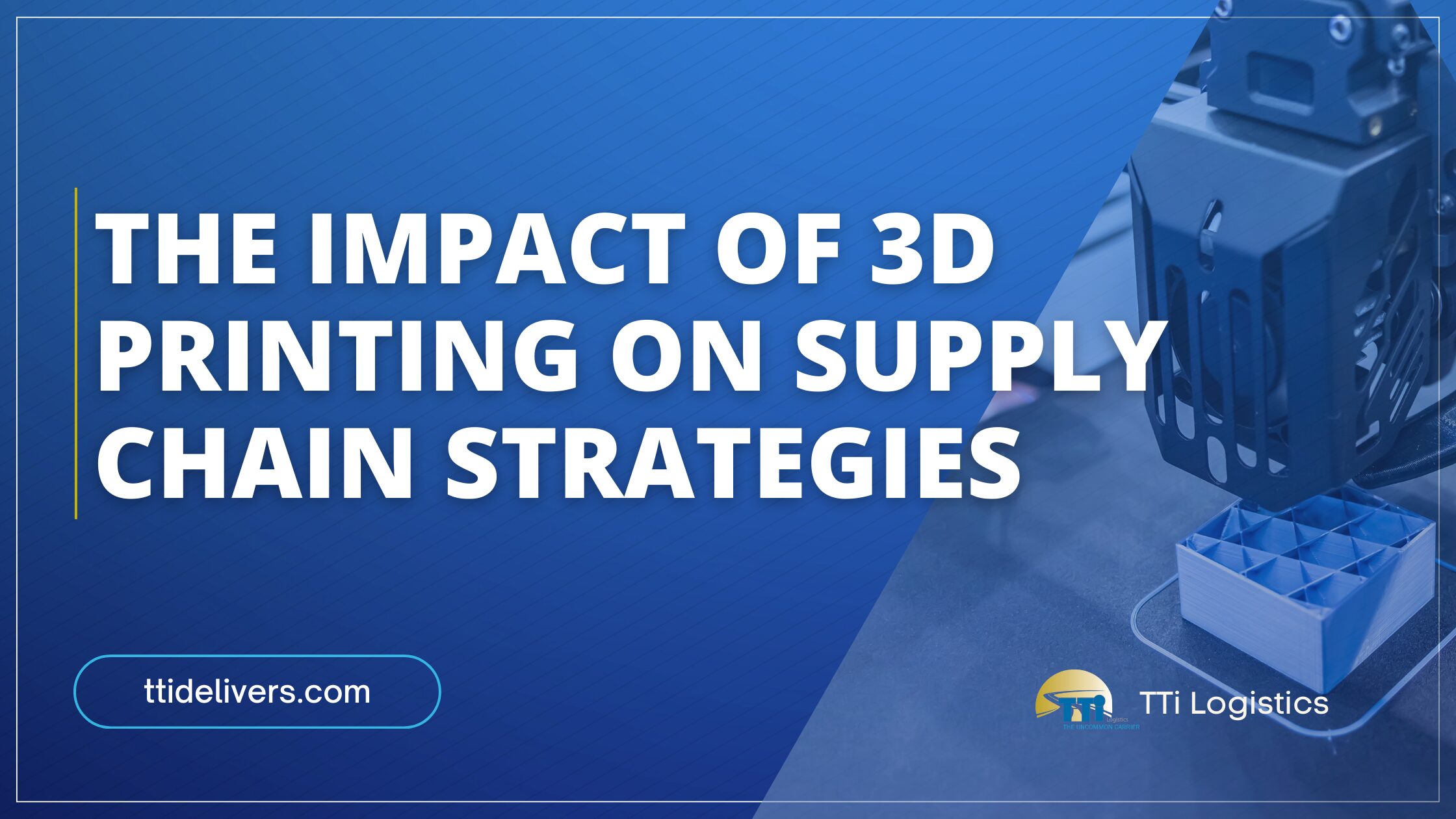How 3D Printing is Reshaping Supply Chain Strategy
In an age of rapid innovation, few technologies have made as significant an impact on logistics and operations as 3D printing. Also known as additive manufacturing, this groundbreaking approach to production is reshaping traditional business models—and nowhere is this shift more evident than in supply chain strategy. The rise of the 3D printing supply chain is redefining how companies think about sourcing, manufacturing, distribution, and inventory management.
What is 3D Printing in the Context of the Supply Chain?
3D printing, or additive manufacturing, involves creating three-dimensional objects from digital files by layering materials. When integrated into logistics and production operations, it transforms the 3D printing supply chain from a centralized, mass-production model to a more flexible, localized, and on-demand structure.
Traditional supply chains rely on forecasts, bulk manufacturing, long lead times, and extensive warehousing. In contrast, the 3D printing supply chain allows companies to produce goods closer to the point of consumption, reduce waste, and better respond to market changes.
Speed and Agility: A Game Changer for Modern Logistics
One of the most compelling benefits of the 3D printing supply chain is the speed it brings to product development and distribution. Instead of waiting weeks or months for tooling and production overseas, companies can now prototype and produce parts in a matter of days domestically.
This agility gives businesses a competitive edge. Whether it’s creating a custom component or replacing a critical part in the field, the 3D printing supply chain enables faster turnaround and reduces dependence on external suppliers.
Reducing Inventory and Warehousing Costs
Inventory management is one of the most expensive and complex aspects of the supply chain. Overstocking ties up capital, while understocking risks lost sales and customer dissatisfaction. The 3D printing supply chain minimizes the need for traditional inventory by allowing companies to print items on demand.
This shift not only lowers warehousing costs but also streamlines logistics. With digital inventories replacing physical stock, companies can maintain virtual catalogs and produce items only when needed. This just-in-time approach is becoming a cornerstone of the 3D printing supply chain, optimizing space and resources.
Localized Production and Decentralized Manufacturing
The decentralization of production is a fundamental advantage of the 3D printing supply chain. Instead of relying on a single, massive production facility, businesses can establish smaller printing hubs closer to their customers. This localized approach shortens delivery times, reduces transportation costs, and lowers carbon emissions.
For example, a medical device company could leverage the 3D printing supply chain to manufacture patient-specific tools directly within a hospital or regional center. This proximity ensures timely access while maintaining high levels of customization and precision.
Mass Customization at Scale
Consumers today demand personalized products without sacrificing speed or affordability. The 3D printing supply chain empowers businesses to offer mass customization, producing unique items without the need for complex retooling or batch processing.
This capability is especially relevant in industries like fashion, healthcare, automotive, and consumer goods. With the 3D printing supply chain, a customer can order a personalized part, and the company can produce it quickly using a digital file, minimizing waste and reducing overall cost.
Risk Reduction and Supply Chain Resilience
Supply chain disruptions—whether due to natural disasters, pandemics, or geopolitical events—have highlighted the vulnerabilities of global sourcing models. The 3D printing supply chain adds resilience by allowing companies to shift from long, rigid chains to more adaptable, localized networks.
When a critical supplier fails, businesses with access to 3D printing can quickly replicate parts using available materials and digital blueprints. This self-sufficiency enhances business continuity and lowers the risks associated with single-source dependencies.
Sustainability and Environmental Impact
Sustainability is an increasingly important metric in modern supply chains. Traditional manufacturing often generates significant waste through subtractive processes. In contrast, the 3D printing supply chain is inherently more sustainable—producing only the material needed for each item, and often using recyclable or biodegradable inputs.
Moreover, localized production in the 3D printing supply chain reduces the environmental impact associated with global transportation and warehousing. For companies committed to green logistics, 3D printing offers a viable pathway to achieving sustainability goals without compromising efficiency.
Challenges to Consider
While the 3D printing supply chain presents numerous benefits, it’s not without challenges. Material limitations, printer capabilities, and intellectual property concerns must be addressed. Additionally, businesses need to invest in skilled labor and reliable software platforms to manage digital inventories and manufacturing processes effectively.
Quality assurance is another critical factor. As the 3D printing supply chain becomes more prevalent, maintaining consistent standards across distributed production hubs will require rigorous testing and quality control protocols.
The Role of Logistics Providers in Supporting 3D Printing Supply Chains
Logistics partners like TTi Logistics are uniquely positioned to support companies transitioning to a 3D printing supply chain. With our expertise in warehousing, last-mile delivery, and white glove services, we help businesses streamline their operations and embrace cutting-edge manufacturing technologies.
From transporting raw materials to setting up mobile 3D printing hubs at trade shows or events, TTi Logistics provides the flexibility and infrastructure needed to power a dynamic 3D printing supply chain. Our customizable solutions ensure that goods arrive on time, in perfect condition, and with maximum efficiency—every time.
Looking Ahead: The Future of Supply Chain Innovation
The future of the 3D printing supply chain is bright. As technology advances and costs continue to fall, adoption will grow across sectors. We’re already seeing applications in aerospace, automotive, healthcare, fashion, and construction—and the list is expanding.
Forward-thinking businesses that embrace this transformation will gain a significant competitive edge. With the ability to innovate faster, reduce waste, and respond quickly to demand, the 3D printing supply chain is not just an emerging trend—it’s a foundational strategy for the future of global logistics.
Positioning Your Business for the 3D Printing Era
The evolution of the 3D printing supply chain is rewriting the rules of logistics. From improving agility and customization to reducing costs and environmental impact, 3D printing is a powerful force reshaping how supply chains operate. As a logistics leader, TTi Logistics is committed to helping businesses navigate this shift with flexible, forward-looking solutions that align with tomorrow’s challenges—and today’s opportunities.







